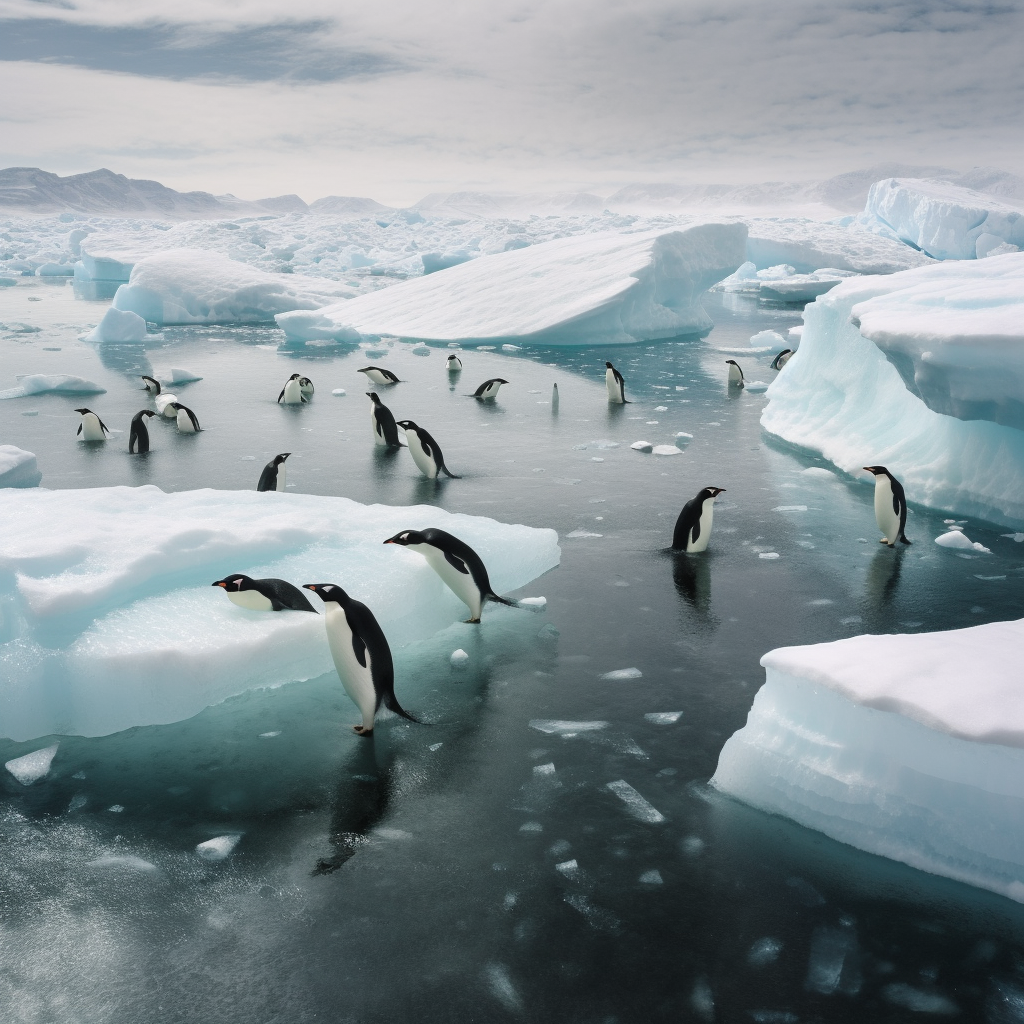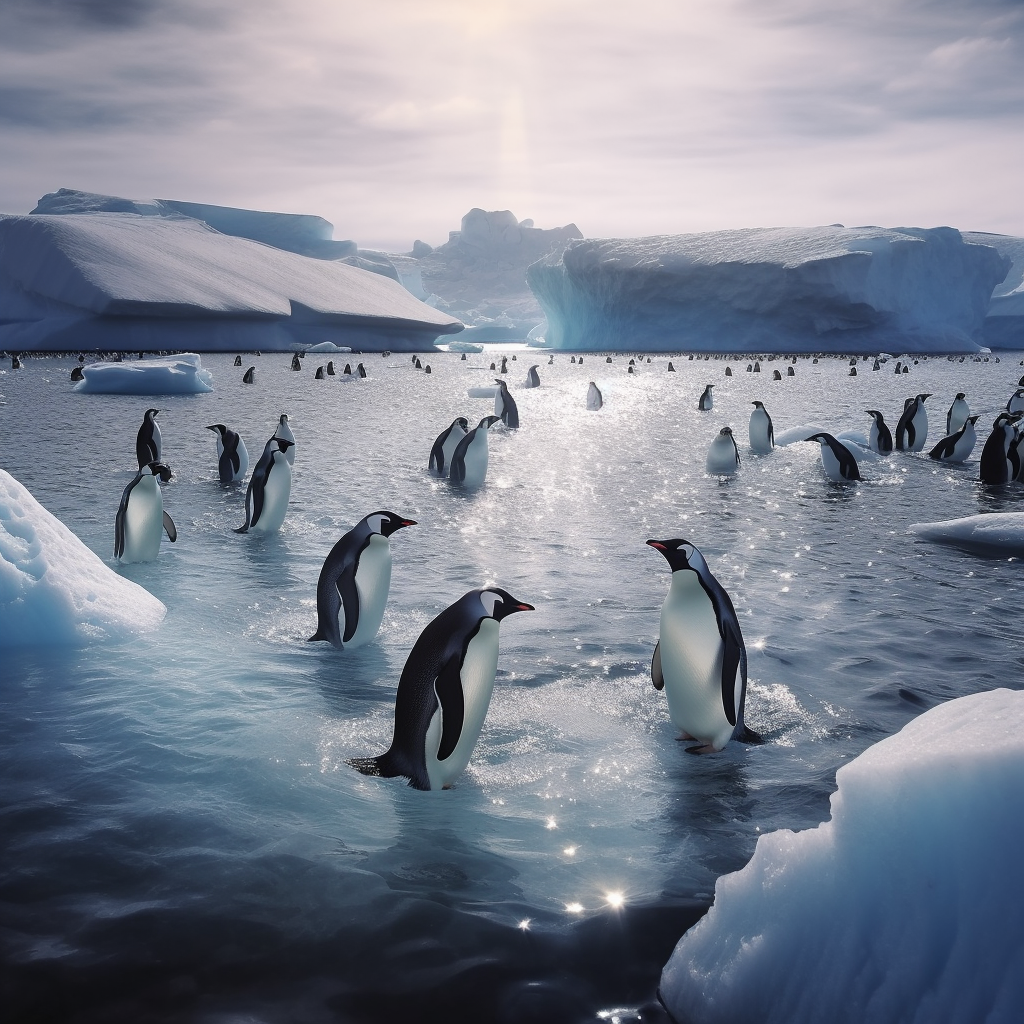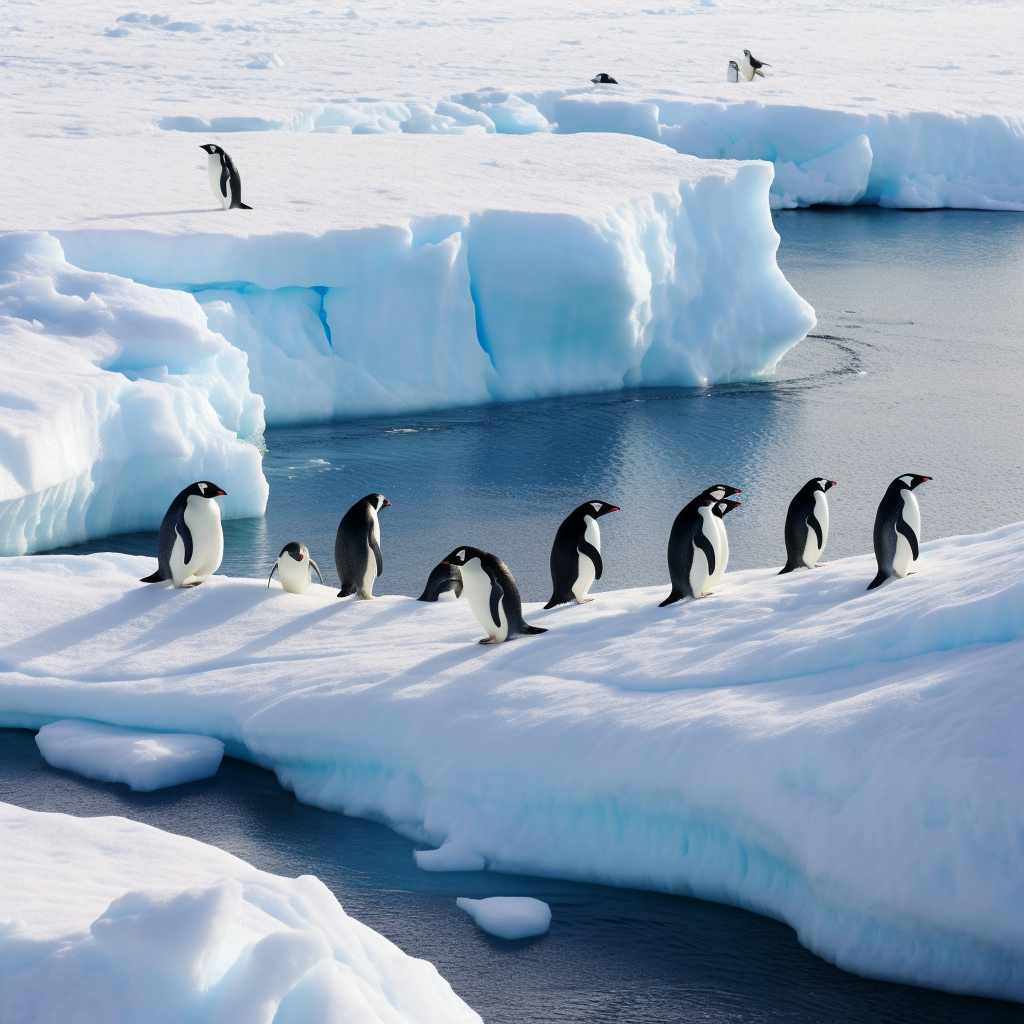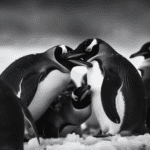Penguins are fascinating creatures that have adapted to life in the water. They are known for their excellent swimming abilities, which allow them to navigate through the ocean with ease. But have you ever wondered just how far penguins can swim? In this article, we will explore the impressive swimming capabilities of these flightless birds and delve into the factors that determine the distance they can cover. From their streamlined bodies to their unique adaptations, penguins are truly remarkable swimmers. So, let’s dive in and discover how far these aquatic birds can go!
Key Takeaways
- Penguins are excellent swimmers and can swim long distances.
- Some penguin species can swim up to 15 miles per hour.
- Penguins have adaptations that allow them to swim, such as streamlined bodies and webbed feet.
- Penguins primarily swim to find food, escape predators, and migrate.
- The Emperor Penguin holds the record for the longest documented penguin dive, reaching depths of over 1,800 feet and staying underwater for up to 22 minutes.
Understanding Penguin Swimming: An Overview
A. Why Can Penguins Swim?
Penguins are well-known for their exceptional swimming abilities. These flightless birds have evolved to be perfectly suited for life in the water. But why can penguins swim so well? Let’s explore the reasons behind their aquatic prowess.
-
Penguin Adaptations: Penguins have a range of physical adaptations that enable them to swim efficiently. Their streamlined bodies, with short wings and webbed feet, allow them to navigate through the water with ease. Their dense feathers provide excellent insulation and waterproofing, keeping them warm and dry even in icy conditions.
-
Buoyancy: Penguins have a high bone density, which helps them stay buoyant in the water. This buoyancy allows them to float effortlessly and conserve energy while swimming.
-
Underwater Vision: Penguins have excellent underwater vision, allowing them to spot prey and navigate through the water. Their eyes are adapted to see clearly in both air and water, enabling them to hunt effectively.
-
Muscular Strength: Penguins have powerful flippers that provide propulsion and steering while swimming. Their strong muscles allow them to swim against strong currents and cover long distances.
B. How Often Do Penguins Swim?
Penguins are highly adapted to life in the water, and swimming is an essential part of their daily routine. The frequency of their swimming varies depending on factors such as species, habitat, and season.
-
Daily Swimming: Penguins typically swim every day, spending a significant portion of their time in the water. They rely on swimming to find food, evade predators, and travel between their nesting sites and feeding grounds.
-
Migration and Oceanic Journeys: Some penguin species undertake long-distance migrations, swimming hundreds or even thousands of kilometers to reach their breeding or feeding grounds. For example, Emperor Penguins are known to travel up to 100 kilometers (62 miles) to reach their breeding colonies.
-
Swimming Patterns: Penguins exhibit different swimming patterns based on their needs. They may swim in small groups called rafts or form larger groups known as colonies when traveling together. Some species, like the Adélie Penguin, swim in a zigzag pattern to confuse predators.
C. Do Penguins Swim Fast?
While penguins are not the fastest swimmers in the animal kingdom, they can still reach impressive speeds underwater. Their swimming speed varies depending on the species and the purpose of their swim.
-
Average Swimming Speed: On average, penguins swim at speeds of around 4 to 7 kilometers per hour (2.5 to 4.3 miles per hour). This speed allows them to efficiently hunt for fish and squid, their primary sources of food.
-
Bursts of Speed: Penguins can achieve bursts of speed when necessary, reaching up to 20 kilometers per hour (12 miles per hour) for short distances. These bursts of speed help them escape from predators or catch fast-moving prey.
-
Diving Abilities: Penguins are also excellent divers, capable of diving to impressive depths in search of food. The Emperor Penguin holds the record for the deepest dive, reaching depths of over 500 meters (1,640 feet).
In conclusion, penguins are remarkable swimmers, thanks to their adaptations, buoyancy, underwater vision, and muscular strength. They swim daily, undertake long-distance migrations, and exhibit different swimming patterns. While not the fastest swimmers, penguins can reach impressive speeds and are highly skilled divers. Their swimming abilities are essential for their survival in their aquatic habitats.
The Depths of Penguin Swimming

Penguins are renowned for their exceptional swimming abilities, allowing them to navigate through the vast expanses of the ocean with ease. In this section, we will explore the depths to which penguins can dive and swim, shedding light on their remarkable aquatic prowess.
A. How Deep Can Penguins Dive in Meters?
When it comes to diving, penguins are true masters of the deep. While the exact diving depths vary among different penguin species, some can reach astonishing depths. The Emperor Penguin, for instance, holds the record for the deepest recorded dive by a bird, plunging an incredible 565 meters (1,854 feet) below the surface[^1^]. This remarkable feat is made possible by their streamlined bodies and specialized adaptations that enable them to withstand the immense pressure of the deep sea.
Other penguin species, such as the Adélie Penguin, are also capable of impressive dives. They can reach depths of around 180 meters (590 feet)[^2^]. These diving depths allow penguins to access food sources that reside deeper in the ocean, where they can find an abundance of fish, squid, and krill.
B. How Deep Can Penguins Swim?
While penguins are known for their diving abilities, they are also skilled swimmers. Penguins can swim at various depths, depending on their species and the availability of food. On average, penguins swim at depths ranging from 30 to 100 meters (98 to 328 feet)[^3^]. However, some species, like the Emperor Penguin, can swim even deeper, reaching depths of up to 500 meters (1,640 feet)[^4^].
Penguins employ different swimming techniques to navigate through the water. They use their wings, which have evolved into flippers, to propel themselves forward, while their webbed feet act as rudders for steering. These adaptations allow penguins to maneuver gracefully through the water, making them highly efficient swimmers.
C. How Far Down Can Penguins Dive?
Penguins are not only capable of diving to impressive depths but also have the ability to remain submerged for extended periods. While diving, penguins can hold their breath for several minutes, with some species able to stay underwater for up to 20 minutes[^5^]. This remarkable breath-holding ability enables them to search for food and evade predators beneath the surface.
The duration of a penguin’s dive depends on various factors, including the species, the purpose of the dive, and the availability of prey. For example, during hunting dives, penguins tend to stay submerged for shorter durations, typically around 2 to 5 minutes[^6^]. On the other hand, when traveling between feeding grounds or evading predators, penguins can remain underwater for longer periods.
In conclusion, penguins are truly remarkable creatures when it comes to swimming and diving. Their ability to dive to great depths, swim with agility, and hold their breath for extended periods showcases their exceptional adaptations to the aquatic environment. These skills not only aid in their search for food but also contribute to their survival in the challenging world of the ocean.
[^1^]: National Geographic – Emperor Penguins
[^2^]: Antarctic Connection – Adélie Penguin
[^3^]: Penguin World – Swimming
[^4^]: National Geographic – Emperor Penguins
[^5^]: Penguin World – Diving
[^6^]: Penguin World – Diving
The Distance and Duration of Penguin Swimming

A. How Far Can a Penguin Swim in One Day?
Penguins are known for their incredible swimming abilities, and they can cover impressive distances in a single day. The exact distance a penguin can swim in one day depends on various factors, such as the species of penguin, their habitat, and their purpose for swimming.
Antarctic penguins, such as the Emperor Penguin and Adélie Penguin, are known to embark on long oceanic journeys in search of food. These penguins can swim up to 50 miles (80 kilometers) in a day, navigating through icy waters with remarkable endurance. Their swimming speed averages around 2-3 miles per hour (3-5 kilometers per hour), allowing them to cover substantial distances over time.
On the other hand, penguins that reside in more temperate regions may not need to swim as far in a day. For example, the Galapagos Penguin, which inhabits the Galapagos Islands near the equator, has a smaller range and may swim shorter distances to find food.
B. How Long Can Penguins Swim Underwater?
Penguins are well-adapted to life in the water and can spend a significant amount of time swimming underwater. The duration of their dives varies depending on the species and their specific needs.
Emperor Penguins, the largest of all penguin species, are known for their impressive diving abilities. They can stay submerged for up to 20 minutes, reaching depths of around 1,500 feet (450 meters). These deep dives allow them to hunt for fish and squid in the frigid Antarctic waters.
Other penguin species, such as the Adélie Penguin, may not dive as deep or stay underwater for as long. They typically dive for a few minutes at a time, reaching depths of around 150-200 feet (45-60 meters). These shorter dives are still sufficient for them to catch their prey and return to the surface.
C. How Many Miles Can Penguins Swim?
Penguins are known for their impressive swimming abilities, and they can cover substantial distances during their oceanic journeys. The exact number of miles a penguin can swim depends on various factors, including their species, habitat, and purpose for swimming.
Antarctic penguins, such as the Emperor Penguin and Adélie Penguin, are known to travel long distances in search of food. They can swim hundreds of miles during their migration, navigating through icy waters with remarkable endurance. These long-distance swims are essential for their survival, as they rely on finding abundant food sources in the open ocean.
In contrast, penguins that inhabit more localized areas, like the Galapagos Penguin, may not need to swim as many miles. These penguins have a smaller range and may swim shorter distances to find food within their immediate vicinity.
D. How Long Do Penguins Swim?
Penguins are highly adapted to life in the water, and swimming is an integral part of their daily routine. The amount of time penguins spend swimming varies depending on their needs, such as hunting for food or traveling to breeding grounds.
During foraging trips, penguins can spend several hours swimming continuously. They tirelessly paddle through the water, using their wings as flippers to propel themselves forward. These swimming sessions are crucial for finding food and sustaining their energy levels.
However, penguins also spend a significant amount of time resting on land, especially during the breeding season. They gather in large colonies on the shore, where they engage in courtship rituals, build nests, and raise their chicks. While on land, penguins conserve their energy and prepare for their next aquatic adventure.
In conclusion, penguins are remarkable swimmers capable of covering impressive distances in a single day. Their swimming abilities vary depending on their species, habitat, and purpose for swimming. Whether it’s the Emperor Penguin embarking on a long oceanic journey or the Galapagos Penguin swimming shorter distances within its localized range, these aquatic birds have adapted to life in the water with remarkable endurance and skill.
Comparing Penguin Swimming Speed with Humans

A. How Much Faster Can Penguins Swim Than Humans?
When it comes to swimming, penguins are truly remarkable creatures. They have evolved to be highly skilled swimmers, capable of traversing long distances in the water. But just how fast can penguins swim compared to humans?
While humans are not built for swimming like penguins, some of the fastest human swimmers can reach speeds of around 5-6 miles per hour (8-9 kilometers per hour) in short bursts. On the other hand, penguins can swim at an average speed of 4-7 miles per hour (6-11 kilometers per hour), with some species capable of reaching even higher speeds.
The fastest swimming penguin is the Gentoo Penguin, which can reach speeds of up to 22 miles per hour (35 kilometers per hour) in short bursts. This impressive speed allows them to quickly catch fish and evade predators in the water. Other penguin species, such as the Emperor Penguin and Adélie Penguin, can swim at speeds of around 5-8 miles per hour (8-13 kilometers per hour).
B. Why Can Penguins Swim So Fast?
Penguins are able to swim so fast due to a combination of their physical adaptations and swimming techniques. Let’s take a closer look at some of the reasons behind their impressive swimming abilities:
-
Streamlined Body Shape: Penguins have a streamlined body shape that reduces drag in the water, allowing them to move through the water more efficiently. Their torpedo-like bodies, with short wings and a streamlined head, minimize resistance and enable them to swim at high speeds.
-
Strong Flippers: Penguins have powerful flippers that act as wings underwater. These flippers are adapted for propulsion, allowing them to generate a significant amount of thrust with each stroke. By flapping their flippers in a rapid up-and-down motion, penguins can propel themselves forward in the water.
-
Air Trapping: Penguins have the ability to trap air in their feathers, which helps increase their buoyancy and reduces drag. This air layer acts as insulation, keeping them warm in the cold waters and allowing them to float effortlessly. By reducing drag, penguins can swim faster and more efficiently.
-
Muscular Endurance: Penguins have well-developed muscles that enable them to sustain their swimming speed for extended periods. This muscular endurance is crucial for their long oceanic journeys and migrations, where they can swim for hours or even days without rest.
-
Underwater Adaptations: Penguins have adapted to the aquatic environment in various ways. They have dense bones that make them more buoyant in water, allowing them to dive deeper. Additionally, their feathers are waterproof, keeping them dry and reducing friction in the water.
In conclusion, penguins are exceptional swimmers, capable of swimming at impressive speeds compared to humans. Their streamlined body shape, powerful flippers, air trapping abilities, muscular endurance, and underwater adaptations all contribute to their remarkable swimming abilities. Whether it’s for catching prey, evading predators, or migrating across vast distances, penguins have evolved to be masters of the water.
Diving into Specific Penguin Species
A. How Far Do Fairy Penguins Swim?
Fairy penguins, also known as little penguins, are the smallest species of penguins, measuring only about 13 inches tall. Despite their small size, these adorable creatures are excellent swimmers. They are found along the coasts of southern Australia and New Zealand, where they spend most of their lives at sea.
Fairy penguins are known for their impressive swimming abilities. They can swim long distances in search of food, often traveling up to 15 kilometers (9 miles) from their breeding colonies. These penguins have been observed diving to depths of around 70 meters (230 feet) in pursuit of their prey, which mainly consists of small fish and squid.
When it comes to swimming speed, fairy penguins can reach speeds of up to 6 kilometers per hour (3.7 miles per hour). They use their wings, or flippers, to propel themselves through the water, while their streamlined bodies help reduce drag. These adaptations allow them to navigate the ocean with relative ease.
B. How Far Can Emperor Penguins Swim?
Emperor penguins are the largest of all penguin species, standing at an impressive height of around 1.2 meters (4 feet). These majestic birds are native to Antarctica and are well-known for their incredible endurance and ability to survive in extreme conditions.
Emperor penguins are exceptional swimmers and are capable of traveling long distances in search of food. They have been recorded swimming up to 100 kilometers (62 miles) in a single journey. These penguins can dive to depths of over 500 meters (1,640 feet) and stay submerged for up to 20 minutes, allowing them to access food sources that are deeper in the ocean.
Their large size and streamlined bodies contribute to their efficient swimming abilities. Emperor penguins use their wings to “fly” underwater, propelling themselves forward with powerful strokes. This technique, combined with their natural buoyancy, enables them to cover vast distances in their quest for sustenance.
C. How Far Can Little Blue Penguins Swim?
Little blue penguins, also known as fairy penguins or blue penguins, are the smallest species of penguins found in the Southern Hemisphere. They are native to New Zealand and Australia, where they inhabit coastal areas and islands.
Despite their small size, little blue penguins are skilled swimmers. They can swim up to 80 kilometers (50 miles) in a single journey, although their average swimming distance is around 15 kilometers (9 miles). These penguins have been observed diving to depths of up to 20 meters (66 feet) in search of food, which primarily consists of small fish and squid.
Little blue penguins have a unique swimming style. They use their short wings to “fly” underwater, propelling themselves through the water with rapid flapping motions. Their small size and agile bodies allow them to navigate through the ocean with ease, making them efficient hunters.
In conclusion, penguins are remarkable aquatic birds with impressive swimming abilities. Different species of penguins have varying swimming distances, with fairy penguins, emperor penguins, and little blue penguins all showcasing their unique swimming skills. From their endurance to their diving depths, these incredible creatures have adapted to life in the water, enabling them to thrive in their marine habitats.
Conclusion
In conclusion, penguins are remarkable swimmers, capable of covering impressive distances in the ocean. They have evolved specialized adaptations that allow them to navigate through the water with ease, such as their streamlined bodies, webbed feet, and dense feathers. Penguins can swim for extended periods, with some species able to dive to great depths and remain underwater for several minutes. While the exact distance penguins can swim varies depending on the species and individual capabilities, they have been known to travel hundreds of kilometers in search of food or suitable breeding grounds. These incredible aquatic birds truly embody the wonders of the natural world and continue to captivate and inspire us with their remarkable swimming abilities.
Frequently Asked Questions
How deep can penguins dive in meters?
Penguins are excellent divers. The depth of their dive varies by species. Emperor penguins, the most proficient divers, can reach depths of over 500 meters.
How far can a penguin swim in one day?
The distance a penguin can swim in a day varies by species and individual endurance. On average, a penguin can cover around 15-20 kilometers per day. However, during migration, some species like the Magellanic penguins can swim up to 170 kilometers in a day.
How long can penguins swim underwater?
The duration of a penguin’s underwater swim depends on the species. Emperor penguins hold the record, being able to stay underwater for up to 20 minutes in a single dive.
How far do penguins swim?
Penguins can swim great distances during their oceanic journeys. For example, during the breeding season, an Adélie penguin can swim over 13,000 kilometers in total.
How far can penguins dive?
The diving depth of penguins varies by species. Emperor penguins can dive the deepest, reaching depths of over 500 meters. Other species, like the little blue penguins, can dive up to 70 meters.
Do penguins swim fast?
Yes, penguins are fast swimmers. The Gentoo penguin is the fastest, reaching speeds of up to 36 kilometers per hour.




